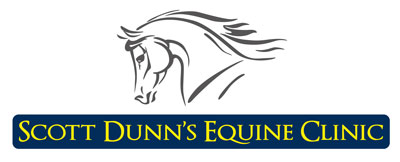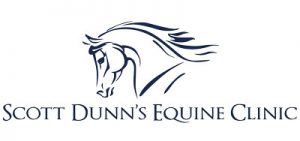EHV is actually a collection of five related herpes viruses which are associated with a variety of diseases. These are classified as EHV 1, 2, 3, 4 and 5.
EHV 1
Most commonly causes respiratory disease in young horses who show variable signs included increased temperature, nasal discharge, enlarged glands and coughing. EHV 1 can also cause single or multiple abortions in mares during mid to late pregnancy. Occasionally foals may be born alive prematurely or at term but soon fade and die, whilst others are still-born at term. In susceptible mare populations, abortion storms can occur. In addition, this is the type of herpes virus that has been associated with neurological herpes, which can occur in horses of any age and type. This often initially causes weakness of the hindlimbs, but may progress to involving all four years and may result in death or the requirement for euthanasia.
EHV 2
Rarely causes disease on its own, but can suppress immunity and make the horse more prone to other infections
EHV 3
This causes coital exanthema, which is an infection of the external genitalia, causing numerous small blisters or spots. Whilst this has no direct effect on fertility, it is spread during mating and the disease will usually resolve in 10-14 days. Some infected stallions may become unwell with an increased temperature.
EHV 4
Is a common cause of coughing and loss of performance in racehorses. Occasionally, EHV 4 is a cause of isolated cases of abortions in mares.
EHV 5
Is also rarely a cause of disease on its own, but it has been associated with a rare but severe respiratory disease called equine multi-nodular pulmonary fibrosis.
Treatment
Treatment of respiratory infections is usually supportive, as specific antiviral agents designed for humans are not especially effective in horses. Horses with the respiratory form of the disease may benefit from medication to reduce their temperature and coughing, and occasionally antibiotics may be given to combat secondary bacterial infections.
Horses affected by the neurological form can be very difficult to treat successfully, but supportive care including anti-inflammatories, intravenous fluids and possibly support in a sling may be used. Euthanasia is usually required for paralysed horses who become recumbent and do not respond to support in slings.
Abortion cannot be specifically treated, but it is imperative that the mare is isolated from all other pregnant mares because she, the placenta, foetal fluids, and the foetus are all heavily contaminated with the virus and are a potential source of infection to other mares.
Coital exanthema is spread during mating, and should not require specific treatment. Affected animals should not be bred until all the blisters have healed.
In a group of animals that have not been previously infected or vaccinated, introduction of the disease will usually lead to clinical signs of varying severity in all the horses present. Those that have been vaccinated or previously infected may show reduced or no clinical signs of infection.
Horses can become carriers of the disease, showing no clinical signs but spreading the virus by ‘shedding’, which usually only occurs in times of stress such as with transport, competitions, and other illnesses. Carriers are therefore very difficult to detect.
Vaccination
There is a vaccination which is recommended to reduce the risk of infection in all horses, and is essential as part of the management of breeding mares. In non-pregnant horses, the primary vaccination course involves two vaccinations four to six weeks apart, followed by booster vaccines every six months. In pregnant mares, we recommend vaccination at five, seven and nine months of gestation to reduce the risk of abortion associated with EHV.

